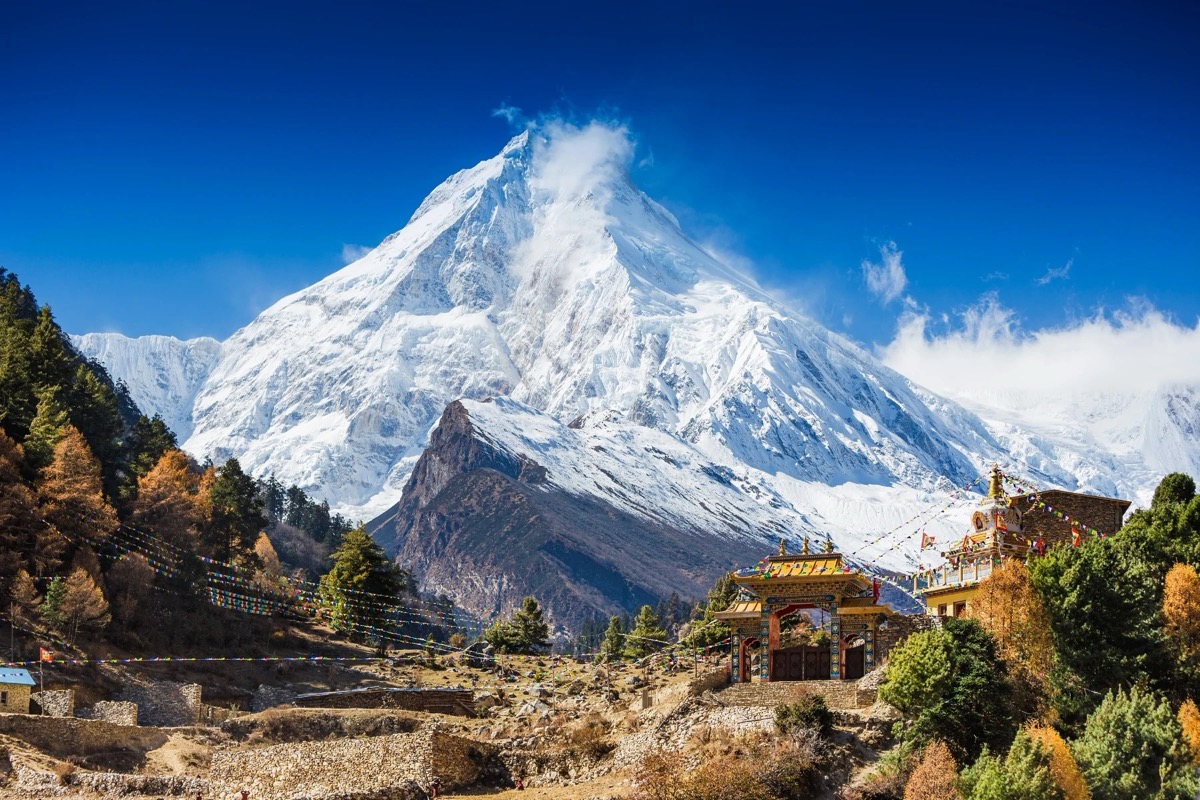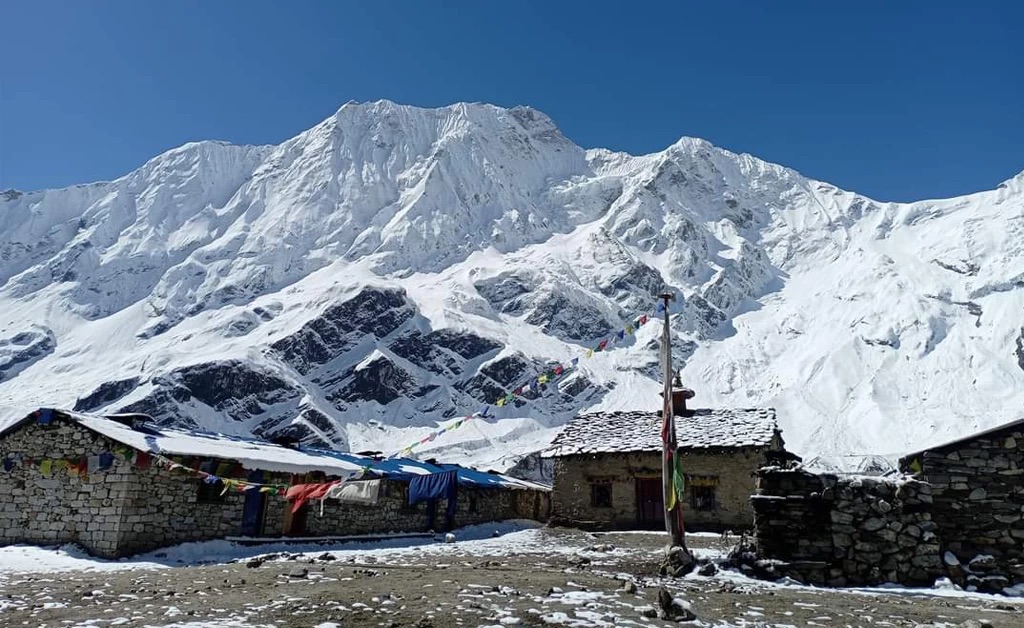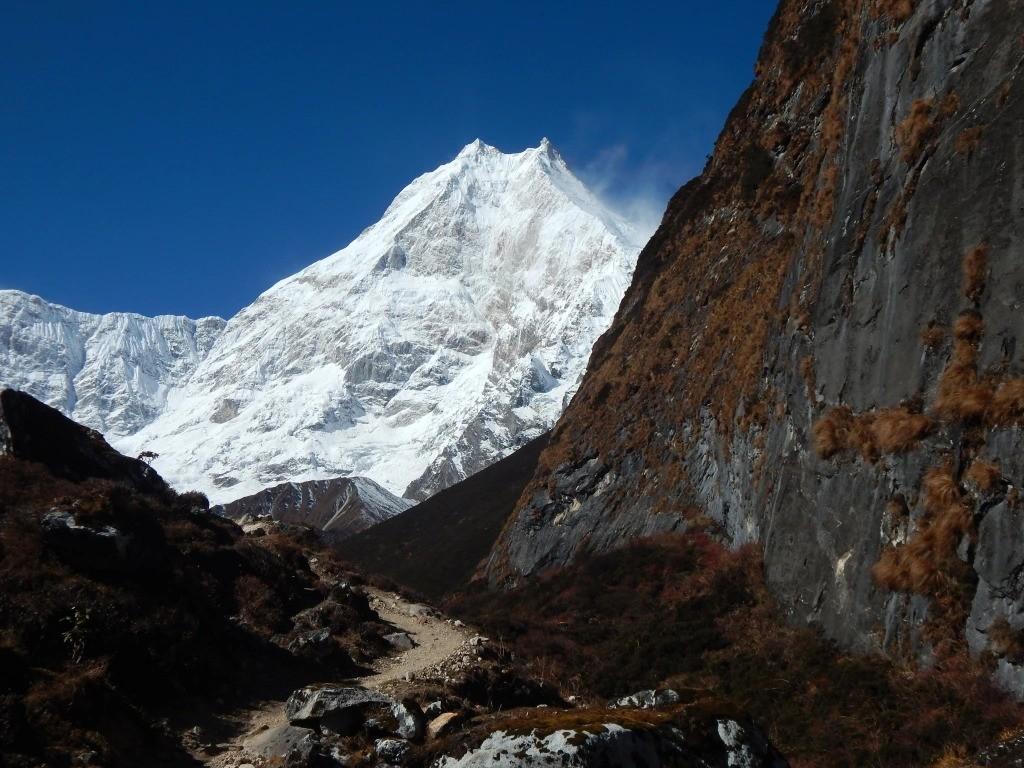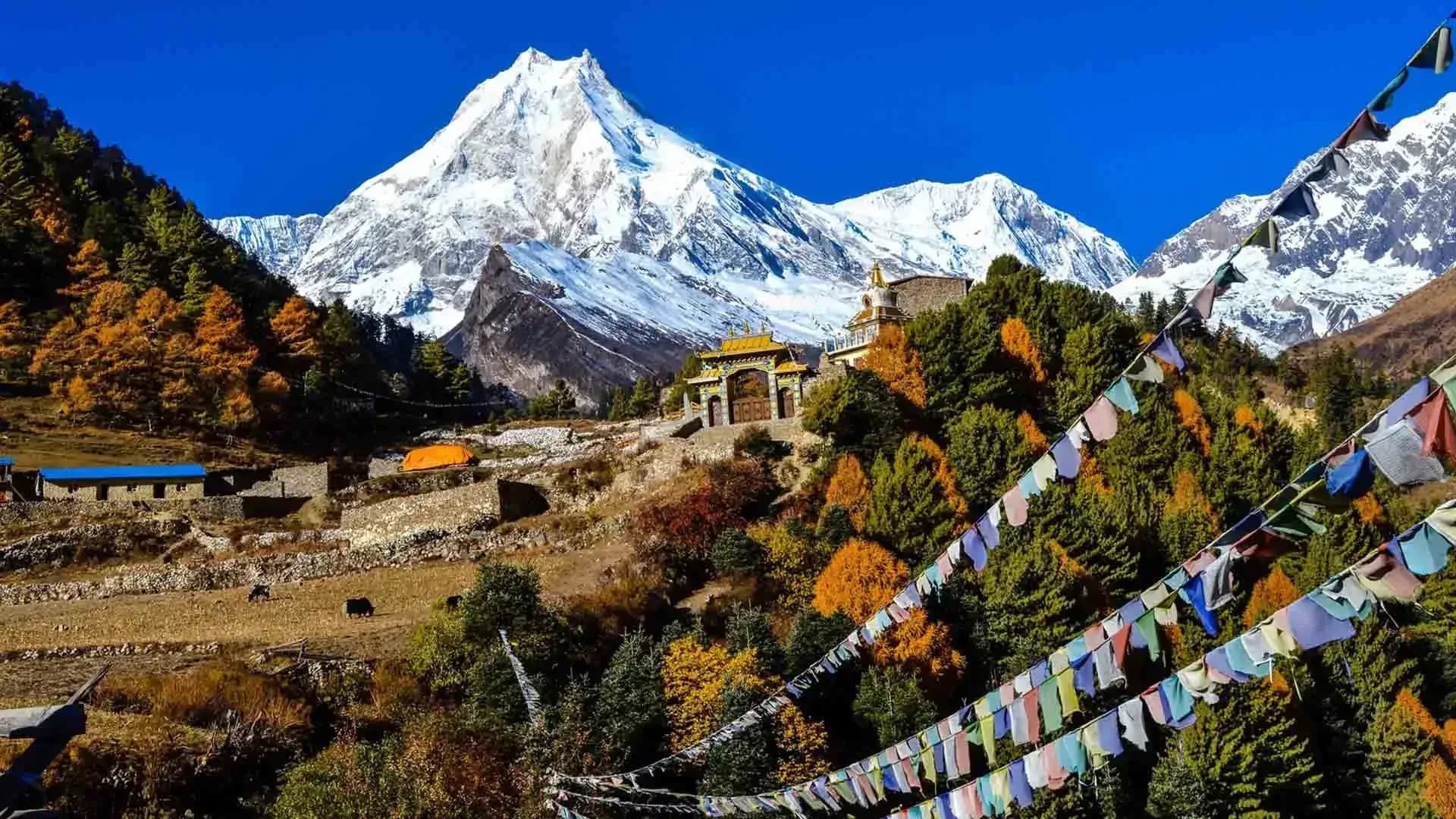Understanding Manaslu Trekking Seasons: An Overview
The Manaslu Circuit Trek is a captivating journey through diverse landscapes, offering trekkers a chance to experience the natural beauty and rich culture of the Himalayan region. Understanding the seasons is crucial for planning a successful trek, as each season offers distinct experiences and challenges.
The spring season, from March to May, is one of the most popular times for the Manaslu Circuit Trek. During this period, the trail is adorned with blooming rhododendrons and other vibrant flora, creating stunning vistas. The weather is generally stable, with clear skies and pleasant temperatures, providing excellent conditions for trekking and photography.
The autumn months, from September to November, are equally favoured by trekkers. After the monsoon rains have subsided, the skies clear up, offering breath-taking views of the snow-capped peaks. The temperature is mild, making it an ideal time for trekking without the discomfort of extreme cold or heat. The local festivals during this time also enrich the cultural experience.
Winter, from December to February, presents a more challenging environment with colder temperatures and snow at higher altitudes. While less frequented, it offers solitude and stunning snowscapes for those prepared to face the chill. The monsoon season, from June to August, is less ideal due to heavy rains, landslides, and limited visibility, making trekking more difficult and unpredictable. Understanding these seasonal variations helps trekkers choose the best time to embark on their Manaslu adventure.

Autumn (September to November)
Autumn is widely regarded as the best season for trekking the Manaslu Circuit. After the summer monsoon, the skies clear up, offering spectacular views of snow-capped peaks like Manaslu, Himalchuli, and Ngadi Chuli. Temperatures are moderate—warm during the day and cool at night—making for comfortable trekking conditions. Trails are dry and stable, and teahouses are fully operational. The autumn season also coincides with major Nepali festivals such as Dashain and Tihar, providing trekkers with rich cultural experiences. Due to its ideal conditions, this is also the busiest trekking season, so expect more fellow trekkers on the trail.
Spring (March to May)
Spring is another excellent time to trek the Manaslu Circuit, especially for nature lovers. As winter ends, the trails come alive with blooming rhododendrons, magnolias, and other wildflowers, creating a vibrant atmosphere. The weather is generally stable, with clear mornings and warmer temperatures compared to autumn. While haze may build up in lower elevations during late spring, the higher altitudes still offer outstanding mountain views. This is a great time for photography and wildlife spotting. Though slightly less crowded than autumn, the number of trekkers increases in April and May. Overall, spring provides a colourful and comfortable trekking experience.
Winter (December to February)
Winter on the Manaslu Circuit is cold but beautiful. The skies are often crystal clear, offering unobstructed views of the Himalayas. However, temperatures drop significantly, especially above 3,000 meters, and night-time temperatures can fall below -15°C. Snow accumulation can block the Larke La Pass, the trek’s highest point, making it impassable at times. Some teahouses at higher elevations may also be closed. This season is best suited for experienced trekkers who are well-equipped for cold conditions and flexible with their itinerary. The reward is solitude—far fewer trekkers on the trail—and a serene, snow-covered mountain landscape.
Monsoon (June to August)
Monsoon is generally the least recommended season for the Manaslu Circuit Trek. Frequent and heavy rainfall leads to slippery trails, muddy paths, and a high risk of landslides, especially in the lower sections of the route. Leeches are also common in the damp forested areas. Cloud cover often obscures mountain views, reducing the visual appeal of the trek. On the upside, the region becomes lush and green, and waterfalls are at their fullest. Trekkers who choose this time must be highly experienced, cautious, and prepared for wet conditions. Because it's off-season, you’ll encounter very few people on the trail.
Manaslu Circuit Weather: Seasonal Patterns Explained
The Manaslu Circuit Trek is a mesmerizing journey through varied landscapes, and understanding the seasonal weather patterns is crucial for planning. Spring, from March to May, offers mild temperatures and the vibrant bloom of rhododendrons. This is an ideal time for trekkers, as the trails are laden with colourful flora and the mountain views are spectacular. However, occasional pre-monsoon showers can occur, so trekkers should be prepared for light rain.
Monsoon season, spanning June to August, brings heavy rainfall, especially in lower altitudes. Trails can become muddy and slippery, and there’s a higher risk of landslides. Clouds often obscure mountain views, making this period less popular for trekking.
Autumn, from September to November, is arguably the best time for the Manaslu Circuit. After the monsoon, the skies clear up, offering crisp, excellent visibility. Temperatures are moderate and conditions are dry, making it perfect for trekking. This season also sees a bustling trail with fellow adventurers.
Winter, from December to February, presents its own challenges. Higher altitudes can experience severe cold, with trails covered in snow, particularly at the Larkya La Pass. While the trek is less crowded and offers solitude, trekkers need to be well-prepared for cold temperatures and possible trail closures due to snow.
Best Time For Manaslu Circuit Trek: Spring Season Highlights
Spring is an exceptional time to embark on the Manaslu Circuit Trek, offering trekkers a vibrant and picturesque experience. As the season unfolds from March to May, the landscape comes alive with blossoming rhododendron forests that paint the trails with vivid bursts of pink, red, and white. The mild temperatures and clear skies of spring provide optimal trekking conditions, making it one of the best times to explore the diverse terrains of the Manaslu region.
With the gradual melting of winter snows, paths open up, revealing breath-taking views of towering peaks like Manaslu and Ganesh Himal.
Wildlife is particularly active during this season, offering trekkers the chance to witness an array of bird species and perhaps even glimpse the elusive snow leopard in the higher altitudes. Local villages buzz with life as residents prepare for the upcoming agricultural season, allowing for rich cultural exchanges with the warm and welcoming communities. Spring also avoids the heavy monsoon rains that follow in June, ensuring that trekking routes remain accessible and enjoyable.
Overall, the spring season showcases the Manaslu Circuit with its stunning natural beauty, comfortable climate, and cultural vibrancy, providing an unforgettable trekking experience that balances adventure with serene encounters with nature and local traditions.

Manaslu Trekking Conditions: Summer And Monsoon Challenges
Trekking the Manaslu Circuit during the summer and monsoon seasons presents unique challenges that can significantly affect the trekker's experience. The monsoon season typically spans from June to September, bringing heavy rainfall to the region. These months are characterized by lush green landscapes, but the trails become muddy and slippery, increasing the risk of accidents. The rain can cause landslides and wash away sections of the pathways, which can lead to unexpected delays and detours.
Visibility during this period is often compromised due to dense clouds and fog, obscuring the breath-taking mountain views that the circuit is known for. Leeches are also more prevalent on the trails because of the damp conditions, posing an additional nuisance to trekkers. Furthermore, many of the teahouses might be closed, reducing accommodation options and making planning more challenging.
However, for those who choose to trek during the monsoon months, there are some advantages. The trails are less crowded, offering a more solitary and peaceful experience for those seeking solitude. The landscape is vibrant and the forests are in full bloom, providing a different kind of natural beauty. While the challenges are significant, with proper preparation and caution, trekking the Manaslu Circuit in summer can be a rewarding adventure for the well-prepared traveller.
Autumn Season On The Manaslu Circuit: Weather And Trekking Quality
Autumn is often considered the best time for the Manaslu Circuit Trek, offering an optimal blend of weather and trekking conditions. Spanning from September to November, this season provides clear skies and stable temperatures, making it an ideal time for trekkers seeking both scenic beauty and a comfortable trekking experience. During autumn, the monsoon rains have subsided, leaving behind lush landscapes and reduced humidity.
The air is crisp and clean, providing stunning panoramic views of the surrounding peaks.
Temperatures during the day remain mild and pleasant, ideal for trekking, although nights can be cool, especially at higher altitudes. It's wise to come prepared with layered clothing to adjust to the varying temperatures throughout the trek. The trails are generally dry and accessible, minimizing the risk of slippery paths, which contributes to an overall more enjoyable journey.
The vibrant autumn foliage enhances the landscape, offering a rich tapestry of colours that accentuate the natural beauty of the region. Additionally, the post-monsoon clarity provides some of the best opportunities for photography, with dramatic backdrops and vibrant hues.
While this is a popular season, the Manaslu Circuit remains less crowded compared to other treks like the Annapurna Circuit, enabling trekkers to enjoy the tranquillity of the remote mountain environment.

Winter Trekking Conditions on Manaslu: Is it Worth It?
Winter trekking on the Manaslu Circuit offers a unique experience, but it comes with its own set of challenges. During the winter months, from December to February, the region is enveloped in snow, creating a serene and almost mystical landscape. The trails, blanketed in white, provide a spectacular backdrop of snow-capped peaks and pristine surroundings, making it ideal for those seeking solitude and who can handle cold conditions.
However, winter also brings harsh weather. Temperatures can drop significantly, especially at higher altitudes, often falling well below freezing. This makes the trek demanding, requiring trekkers to be well-prepared with appropriate gear such as thermal clothing, high-quality sleeping bags, and trekking boots designed for icy conditions. Furthermore, heavy snowfall can lead to trail obstructions, potentially making some parts of the route impassable.
The Larke Pass, one of the highlights of the trek, can be particularly challenging due to snow accumulation. Therefore, winter trekking is best suited for experienced trekkers who have acclimatized to high-altitude conditions and are comfortable with potentially arduous trekking. While the winter season offers unparalleled tranquillity and stunning views, trekkers must weigh these benefits against the difficulties posed by the cold and snow, assessing whether the added solitude and beauty are worth the increased risk and effort.
Conclusion
In conclusion, the best time to trek the Manaslu Circuit is during autumn (September to November) and spring (March to May), when weather conditions are most stable, visibility is clear, and the trails are at their most scenic. Autumn offers crisp air, panoramic mountain views, and cultural festivals, while spring adds vibrant wildflowers and warmer temperatures. Winter can be rewarding for experienced trekkers seeking solitude, though harsh cold and snow present challenges. Monsoon season is the least favourable due to rain, leeches, and landslides. Choosing the right season enhances safety, enjoyment, and the overall experience of this remote Himalayan adventure.
Tsum Valley Trek Everest Gokyo Lake Trek Annapurna Circuit Trek

